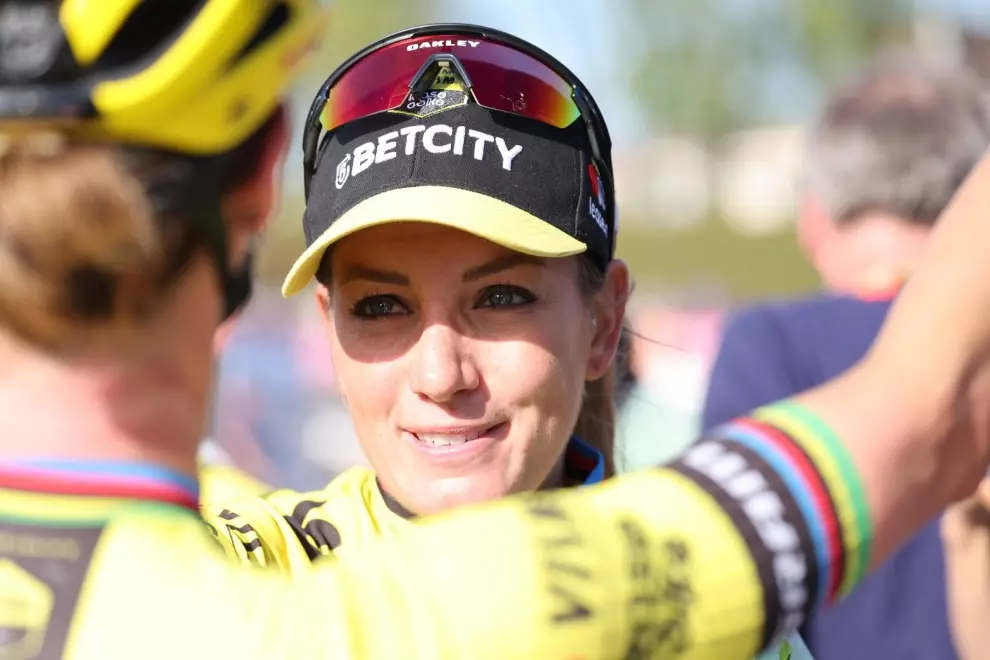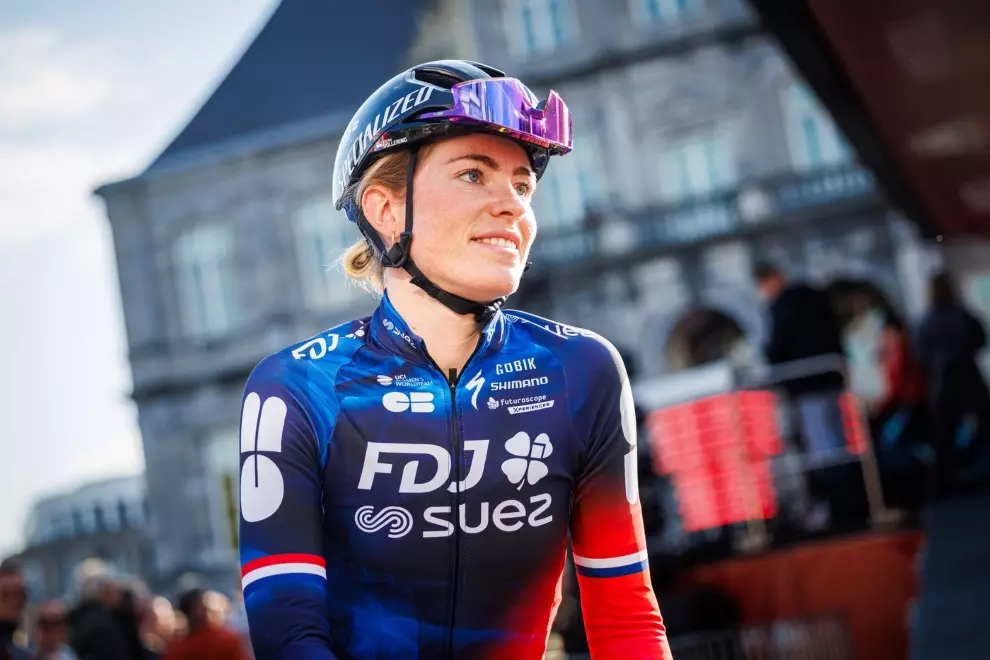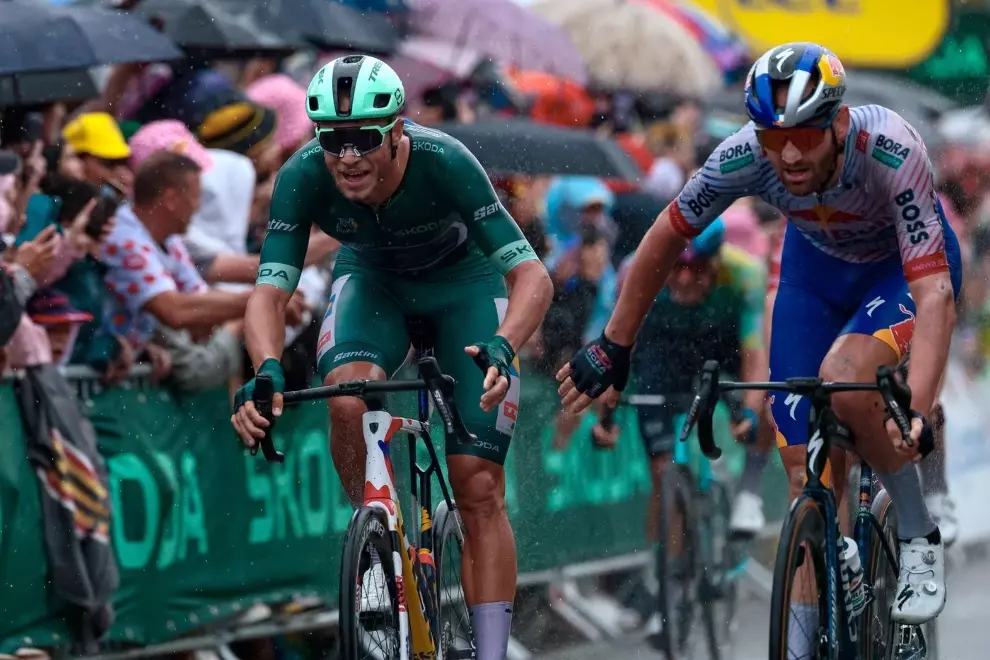In the past, the Tour de Pologne used quite long stages, distance-wise. This year, the organizers had a completely different approach, with shorter and rather aggressive roads. What are your thoughts on this? Do you think it was a wise choice? Should this be an alternative race format for some of the week-long stage races?
This year’s Tour de Pologne edition was only the second one for me. This year, we had one long flat stage of 238 km, one hard mountain stage of 190 km, and the rest of the stages, which were rather short, were quite dynamic, fast and we saw more attacks, even when it was almost obvious that there would be a sprint finish.
I think this Tour de Pologne was designed really well, we had sprints, we had a couple of hard stages with not too long but very steep mountains and we had the stage with the finish in Rzeszów, which was similar to a Belgian classic (from a big road to a small one, up and down, short and steep hills and a sprint of a reduced peloton). It was a good mix; you don’t need to have 200 km every day, but sometimes a long mountainous or hilly stage is needed to show the potential of the best riders.

Strategically, how did these shorter stages change the race style for the teams? As you very well know, the main GC contenders were all very close time-wise, till the end. Do you think this made for a closer race overall?
Apart from the fact that here in Poland the stages were short, we also need to consider that each team had a squad of seven riders (compared to 8-rider squads in normal races and 9-rider squads in grand tours).
This obliges the teams to be more careful at the beginning when the war for the breakaway is on. As you know, you can’t leave too many riders in the break, otherwise it will be hard to close the gap in a 130km stage for example (especially if it is a flat stage).
So yes, for sure this changed the race style a bit as you can go “a block” for 130 km, but you can’t do it for 250. Considering the GC, I wouldn’t say that. The riders in the first positions were all on the same great level, and the final climbs were just not long enough to have bigger gaps, but having the GC open until the very last metre of the race is actually a good thing, suspense and surprises are part of this sport.
In many of the stages, we saw you leading the team and riding right at the front of the peloton. Will this be a new role for you at Bora Hansgrohe in the future?
Well, I may say that my role has always been to work for the team. In the past, I was in the breakaway many times, but it was always on request of the team. Now I have the chance to work for very strong captains, and this motivates me even more.
I think I ride stronger when I work for the teammates than when I ride for myself. Here in the Tour de Pologne, I was super motivated, working with Peter for the sprints and with Rafał for the GC, it was one of the most satisfying weeks of my career. The fact that the race took place in Poland (and three stages in Silesia) just gave that extra push to ride faster, as this place is my second home.

We cannot help but mention that you seem to have a pretty large personal fan club here in Poland. How did this happen, and can you tell us a little bit about your fans?
Well, as you know by now, my wife is Polish, and I always spend my off-season and easy time in Gliwice. From here comes my connection to Poland.
Also, during the last season, I used to take part in the live Facebook videos of my former teammate Bartosz Huzarski during the grand tours, and this was probably the main way people got to know me. In October 2016 I organised a short loop around Gliwice with local amateurs and simple cycling lovers and on that occasion I also made some new friends!
So this year at the Tour de Pologne, I was lucky to have people to cheer for me on the road at every stage, which is super motivating, believe me! On Stage 2 in Katowice, there was a really big banner on a bridge in the final circuit downtown. Also, in the final hills in Rzeszow, the fan club went all the way and wrote my name on the tarmac many times. The same happened in the last two stages around Zakopane and Bukowina Tatrzanska, so I can say I was super happy to see such support.
On August 3rd, there were many people singing Happy Birthday to me! Really I must say that this year at the Tour de Pologne, I had something from the people that I had never had before, and this really feels great. Every day I met somebody I knew before or after the stage, so I would like to thank all of them, and particularly Szymon Konieczny (founder of the Poland Hansgrohe Fanclub – see Facebook for details) as well as Marek Grabiwoda, who bakes Makowiec (cake with poppy seed filling) for me every time he meets me.
Anyway, all the people along the roads were great, and all of you, people cheering on the climb of Gliczarow, you were simply crazy!
Let’s talk about the future for a second… We now know that your friend Daniel Oss (currently at BMC), and British Peter Kennaugh (now at Team Sky) will both join the ranks of Bora Hansgrohe for the season of 2018. How do you think this will change the depth of your team? In your opinion, what will be their roles? Also, since you are a personal friend of Daniel Oss, do you think that he will bring his bass guitar to each and every race?
Well, I can say that one of Peter Kennaugh’s main strengths is that he is a very versatile rider; he has great climbing skills, he can win races as a “finisseur” and he can also help the team on every terrain and in all race situations. Peter will surely increase the overall power of the team.
As for Daniel Oss, he is in my age group and we live pretty close to each other in Italy. We already raced as teammates in the past. I perceive him as a great support for Peter (Sagan), especially in the spring classics on the rough cobblestones of Belgium for example. But I am sure he will have the chance to show his potential and to score some good results as well.
Now about his bass guitar… I don’t know, but I do know that he definitely has a very good portable speaker. So hopefully he will bring some good headphones as well, sometimes silence is required to recover properly after the stage (laughing).
After the Tour de Pologne, which races are you scheduled to participate in?
At the moment my schedule says Czech Cycling Tour from August 10th to 13th. Then it’s straight to La Vuelta.
Team Bora Hansgrohe’s motto is “Ride Natural”, and the team is well-known for its focus on healthy and natural nutrition for its athletes. We are just curious here… What do you prefer on the menu after race time? Can you give us an idea of what you guys eat on a daily basis after a race? 🙂
Right after a race, and much like every other team, we drink a recovery shake. This contains a mix of fast sugars and proteins.
Then on the bus we can usually choose between pasta and rice and we can decide to add some Parmesan cheese, some tuna or some chicken if available. Later in the hotel, after our daily massage, we have a normal dinner. This may consist of a soup, some veggies, again pasta or rice with fish or meat. And our chef also gives us a piece of some healthy dessert, which is always nice!
Also, the size of the meals always follows the length of the stage we just had and the length of the stage of the following day, so the longer the stage is the bigger the portions are! And rest assured that this increases the satisfaction at the table, believe me!
Okay! Well, we thank you very much for this interview! Let’s keep in touch and talk again later on this season!





